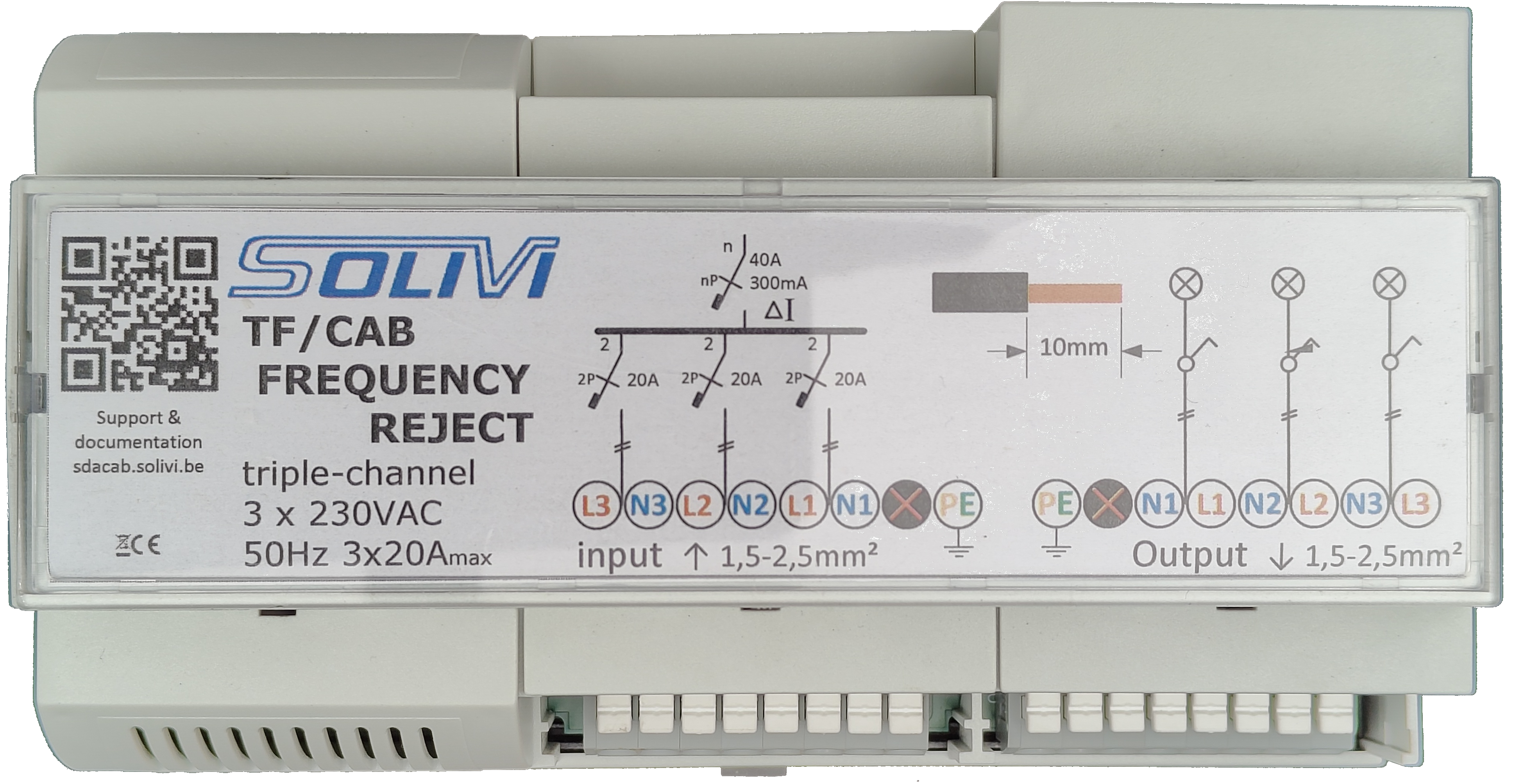We gebruiken cookies uitsluitend om uw kleurenschema en taalkeuze te onthouden. Maak uw keuze aub.
Nous utilisons des cookies exclusivement pour sauvegarder votre schéma de couleur et votre langue préférée. Choisissez svp.
We use cookies only to remember your preferred color scheme and language. Make your choice please.

To avoid the problems caused by TF / CAB signals, we have looked for a solution to implement in an economically responsible way by placing a filter at the input of the light circuits, between the breaker and the switch or dimmer of the consumer. This only requires a small intervention that can be installed by a qualified electrician in half an hour, provided that there is still enough free space in the fuse box (9 DIN-rail modules for 3 circuits).
Our SDACAB connects to 3 separate 230VAC circuits of 20A maximum. Connection is always between the circuit breaker and the switch or dimmer.
For each line input it is mandatory to also connect its neutral line (these neuter lines are not interconnected inside the module in order to keep 3 totally independent circuits)
In Flanders, Fluvius applies CAB frequencies starting from 180Hz and higher. In the Bode diagram, the attenuation for this frequency is -3.4dB, which should be sufficient to have no effect on the electronic equipment connected behind the filter.
From here, all higher frequencies are linearly drastically attenuated, so that any frequency above 140Hz virtually no longer passes the filter. In the above Bode diagram, 125Hz is the resonance frequency that is amplified, but this frequency (and the surrounding frequencies) are not used on the grid, so this has no effect.
An additional benefit of this module is that it has built-in surge protection, so that in the event of overvoltage, the RCD (Residual Current Device) automatically turns off and protects all equipment connected to the circuits behind the RCD. This includes, for example, wall outlets and hardwired connections, in addition to the lighting circuits for which this module is primarily intended.
Another benefit is that all high frequencies are filtered out. This is important for people who are highly sensitive to electromagnetic radiation that enters the home through the electrical network.
Radiation that enters through the air can now also be easily kept out by using insulation with aluminum foil (which is nowadays standard practice for new homes). This creates a Faraday cage that keeps out most radiation. The disadvantage is, of course, for 4G / 5G GSM reception, as those radiations are also kept out. A solution is then to call via internet and WiFi. These frequencies are in the range of 2GHz and 5GHz. It is also better to not use the 5GHz band if one is sensitive to it and only use the 2GHz band (which is also used in microwave ovens, WiFi cameras and other wireless equipment).